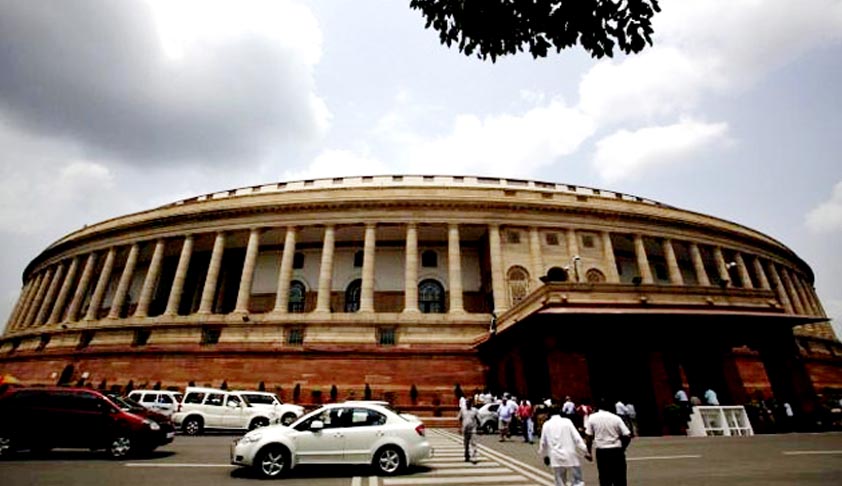Simultaneous Election To Parliament And Assemblies
Hemant Sarin
10 Sep 2016 4:59 AM GMT
The President, Dr.Pranab Mukherjee, has reportedly supported the idea of simultaneous elections being conducted for the Lok Sabha and the State Assemblies. Prior to him, the Prime Minister had also given a call advocating such polls. Way back in 1999, the Law Commission of India in its 170th Report on Reform of Electoral Laws recommended “..... yet the holding of a separate election to...
The President, Dr.Pranab Mukherjee, has reportedly supported the idea of simultaneous elections being conducted for the Lok Sabha and the State Assemblies. Prior to him, the Prime Minister had also given a call advocating such polls. Way back in 1999, the Law Commission of India in its 170th Report on Reform of Electoral Laws recommended “..... yet the holding of a separate election to a Legislative Assembly should be an exception and not the rule. The rule ought to be one election once in five years for Lok Sabha and all the Legislative Assemblies”. As recent as in December 2015, the Department Related Parliamentary Standing Committee on Personnel, Public Grievances, Law and Justice in its 79th Report on the ‘Feasibility of Holding Simultaneous Elections to the House of People (Lok Sabha) and State Legislative Assemblies’ also supported such an endeavour [See Report here]
The Constitution came into force on 26.1.1950 and thereafter our country has been through 16 polls to the Lok Sabha. The First General Elections to the Lok Sabha and all State Legislative Assemblies were held simultaneously in 1951-52 and this practice continued in the three subsequent General Elections held in 1957, 1962 and 1967. However, thereafter, the cycle got disrupted due to premature dissolution of some State Assemblies.
The duration of the Houses of Parliament is provided in Article 83 of the Constitution of India. As per Article 83(2), the House of the People (Lok Sabha) has a term of five years from the date appointed for its first meeting. This period can be cut-short if the Lok Sabha is dissolved earlier. Similarly, this period of five years is extendable during Proclamation of Emergency. A State Assembly, under Article 172(1), also has a five year tenure from the date of its first sitting.
Today the Election Commission holds elections somewhere in the country every year. Whether it is an election to the Lok Sabha or to the State Assembly or a Bye-Election to either of the Houses. The conduct of elections in a vast country like ours is a complex and expensive exercise. The Election Commission has to look into several factors before fixing the date of any election - the weather because during winter several constituencies may be snow-bound and during the monsoon access to remote areas may be restricted, the crops time-table so that the planting or harvesting of crops is not disrupted, exam schedules because schools are used as polling stations and teachers are deputed as election officials, religious festivals and public holidays. Further, the Election Commission has to ensure that ballot boxes or EVMs reach the polling stations on schedule alongwith the related manpower and security. The cost of conducting an election runs in to several crores of rupees.
Those advocating for simultaneous elections to the Lok Sabha and State Assemblies highlight the benefits of such an exercise which would include :
- reduction of expenditure;
- less disruption of development works which get stalled when the Model Code of Conduct comes into operation on the notification of an election;
- better governance since there will be less disruption;
- continuance of normal public life which gets disturbed by frequent rallies, traffic chaos, noise pollution, etc.; and
- better human resource deployment.
No doubt the holding of simultaneous elections to the Lok Sabha and the State Assemblies would be a step forward. However, the fact remains that the tenure of either the Lok Sabha or a State Assembly cannot be curtailed or extended except by amending the Constitution, proclamation of Emergency aside. For holding simultaneous elections some State Assemblies may require to be dissolved before the end of their tenure while some may require to continue beyond their tenure. No political party in power would agree in the first scenario while no political party in opposition would agree to the second scenario. Several political parties have already expressed their reservations. Further, security in one big reason why polls even in a single State are spread over several phases. Logistics is another major issue which may be a stumbling block for holding simultaneous election. The quantum of ballot papers or EVMs, their transportation and safekeeping, number of polling stations to be set-up, man-power, polling hours (our North-Eastern States wakes up couple of hours before the rest of the country), weather, etc. raise a number of questions about the feasibility of holding simultaneous elections.
In the 1951-52, there were 489 seats to be filled in the Lok Sabha and 3278 seats in the State Assemblies. Today there are 543 seats to be filled in the Lok Sabha and 4120 seats in State Assemblies. The number of voters has also gone up manifold. The idea of holding simultaneous elections, though attractive, may not be achievable in the near future.
Hemant Sarin is a Lawyer practising in Punjab and Haryana High Court.
The opinions expressed in this article are the personal opinions of the authors. The facts and opinions appearing in the article do not reflect the views of LiveLaw and LiveLaw does not assume any responsibility or liability for the same.


